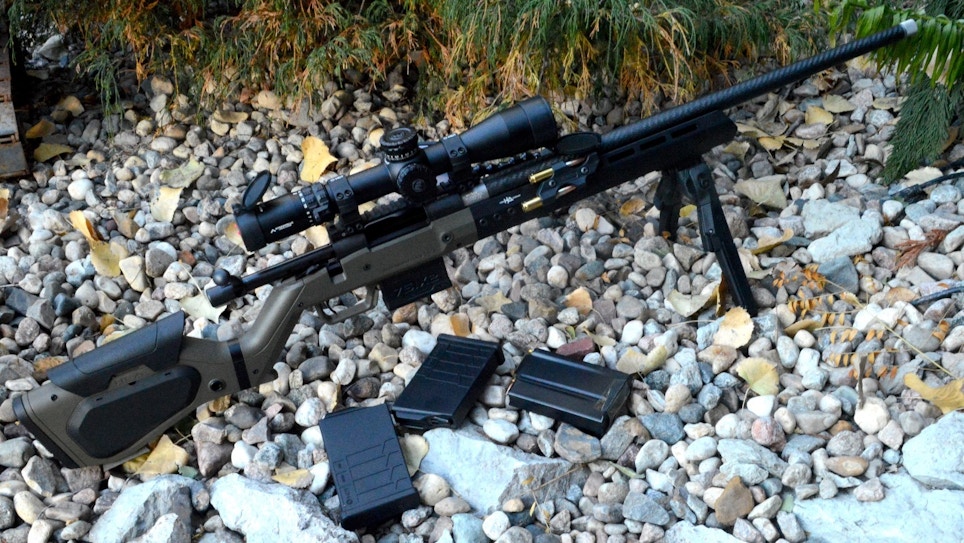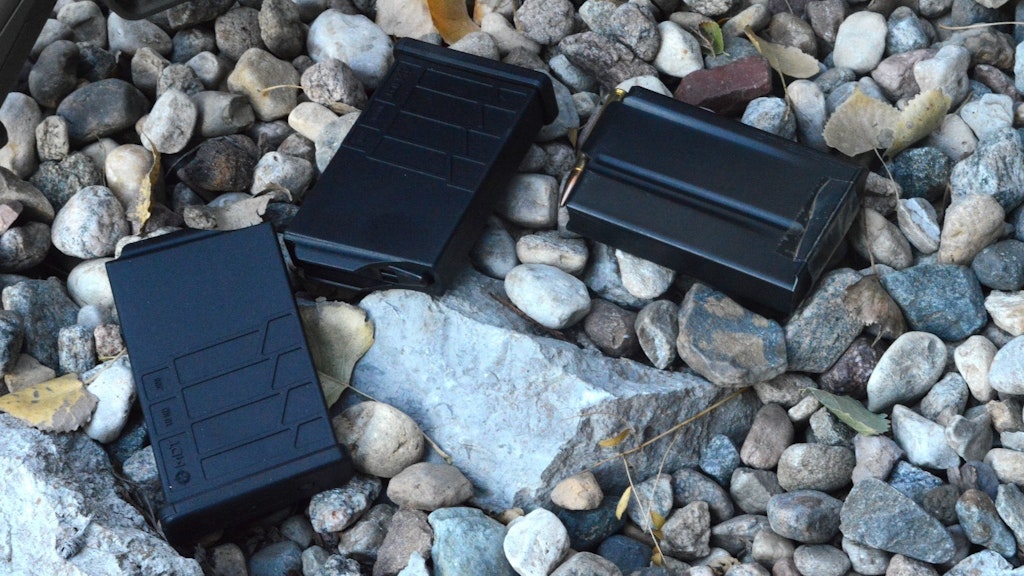There have been few arguments that Howa rifles are anything but high-precision, quality and solidly built Japanese rifles. To assure confidence in the accuracy of their rifles, Legacy Sports International offers a sub-MOA accuracy guarantee on all Howa M1500 rifles with premium factory ammunition. From this author’s experience with six different Howa 1500 actions in a variety of calibers, the accuracy guaranteed is typically overachieved, with several rifles offering tested ¼-MOA accuracy.
Howa’s long, storied history dates back to creating the accurate Japanese Arisaka rifles. Howa manufactured the AR18/AR180s in the 1970s under a licensing agreement with Armalite and currently manufactures the 1500 and Vanguard long- and short-action receivers for many well-regarded U.S. companies as a base for their rifle offerings. The Japanese-made Howa precision rifles are marketed in the U.S. by Legacy Sports International. Uniquely, Howa was one of the first rifle companies to partner with aftermarket chassis manufacturers to deliver out-of-the-box rifles with premium chassis. They have repeated this very successful formula with models featuring chassis from Hogue, MDT, Stocky’s Stock, APC, and many others. Now they are offering the German-made Hera H7 chassis and carbon fiber barrel models.
Howa Short Action
The Howa Hera H7-equipped rifles are incredibly well made, with a fit and finish that are far above its $899 MSRP for steel-barrel models or $1,299 for the carbon fiber models. The foundation of the Howa short action is the same familiar precision action that has been proven for years in either .308 Winchester or 6.5 Creedmoor, with threaded ⅝-24 barrels in either 22- or 24-inch barrel options. What sets this Hera H7 Model offering apart is the choice of heavy target steel or lightweight carbon fiber barrel options.
According to Howa, there should be little accuracy difference between the barrels, however, carbon fiber does offer extra advantages. Notably, Howa does make their own carbon fiber barrels in-house, according to Legacy Sports. The attractive features of carbon fiber barrels are a faster cooling barrel, which reduces potential shot drift during long strings of fire, and usually less cold-bore temperature sensitivity. The major noted advantage of the carbon fiber barrel is a noticeably lighter rifle with a full barrel length. Those hiking with a rifle will appreciate the precision and higher velocity of a longer-barreled rifle and features of the H7 chassis in a weight similar to typical compact sporter.
The weight difference between the heavy steel barrel and carbon fiber models is substantial. Model weights without scope base or magazine are 11.5 to 12.3 pounds for steel-barrel models based on barrel length, while the carbon fiber 24-inch model weighs only 7.8 pounds. That is a huge 4.5-pound difference between the steel- and carbon fiber-barreled models, which could be a substantial point for those that hike even short ranges.
Howa actions feature a machined receiver and forged bolt with integral bolt handle, pressure vent holes, and reliable M-16 style extractor/ejector, and they’re drilled and tapped for a scope base. Bolt faces are true and square to the chamber. All barrels are cold-hammer-forged steel and are chambered symmetrically at the center of the axis with headspace set to stringent and exacting specs. Receivers feature a three-position safety, which allows for the action to be locked down as well as unloaded while safe.
Howa’s 2-Stage HACT Trigger has gained a reputation as a great factory trigger with crisp and light trigger pull. As with any great precision rifle, the Howa HACT 2-stage is part of the accuracy equation. Howa also backs every rifle with a 100% Lifetime Warranty to the original owner.
Hera H7 Chassis
The Hera H7 chassis adds to the precision and capabilities of the great Howa action, with an interesting combination of precision chassis comfort on the bench while also feeling equally comfortable when in the field with poorly supported or unsupported shots. Generally, most precision chassis are not as comfortable or accommodating out in the field when stable support is not available. In handling the Hera H7 chassis, it feels like a marriage between a premium precision chassis and a traditional-style stock with natural and neutral ergonomics that should appeal to both hunters and precision shooters.
The Hera H7 stocks are made in Bavaria, Germany, of impact-modified polymer. They’re available in black, tan and green with an integrated aluminum V-block sub-chassis, which provides a solid mechanical bedding solution, optimizing accuracy and free-floating the barrel. The forend is extruded aluminum, which seamlessly continues the contour of the stock with solid MLOK accessory mounting points. The chassis also supports adjustability with the included two spacers and a removable single-position polymer cheek pad. Extras include a Hera AICS-compatible five-round magazine and rear stock Picatinny monopod mount.
Mounts, Rings, Optics & Extras
Like most precision rifles, Howa does not include a scope base, as this is often a personalized choice for shooters. I choose to use MDT as a single source for most accessories. An MDT 20-MOA scope base provides plenty of scope adjustment for those really long shots, and MDT’s Elite 34-mm Rings, MLOK data card holder, .308 Spare round holder, and ORYX bipod are all premium quality. MDT also provided several of their AICS-compatible magazines in various capacities. The build focus was a lightweight precision rifle, so the lightweight 20-MOA base and rings were the right choice to keep weight to a minimum.
The brand-new $750 Primary Arms GLx 3-18x44 FFP riflescope was featured. This optic features Primary Arms own illuminated ACSS Apollo Reticle tuned for .308/6.5 Grendel, and although noted as PA’s mid-tier optic, it competitively challenges optics twice its price with the features and clarity, including first focal plane, return-to-zero steel-on-steel turrets, and a huge 180 MOA of adjustment elevation adjustment. The PA GLx also features a 34mm tube with auto-live illumination for extended battery life, integrated magnification lever, and a weight under 30 ounces. It is an extremely impressive, feature-rich, high-clarity optic for dealers as a competitive offer to optics $300-$400 more expensive.
Goals of Hera H7 Showcase Build
As an owner of many custom precision rifles approaching 20 pounds including accessories, I set a goal here of light weight. There are many ways to configure a rifle, and for this build, the goal was to retain the essence of the light weight that the carbon fiber barrel offered. Instead of a 12+ pound rifle with 5 pounds of extras, care was taken to select MDT’s high-strength but light weight aluminum base rings and aluminum and composite accessories. Similarly with the optic, the magnification was limited to a more conservative 3-18 range to reduce weight from heavier, higher-magnification optics. Though this Howa H7 is very capable at longer ranges, the likelihood is that shots under 200 yards are most likely, and the low 3X minimum magnification makes sense for a rifle with a weight that could be easily shot off-hand unsupported. The 11-ounce MDT Oryx bipod was also chosen based on both its weight and the full-featured capabilities, including folding, tilt, cant, flick-to-deploy, button height adjustment and MLOK or Sling-Stud mount options.
Accuracy & Final Thoughts
Unlike the blue steel barrels, it did take a little over 100 rounds for this stainless carbon fiber barrel to settle in, and the first six rounds delivered a less-than-ideal group. Within the first 10 groups, however, the Howa did deliver on the ½-MOA guarantee, and after a few hundred rounds, groups tightened up further with ¼-MOA. Some very tidy clover-leaf sub-¼-MOA groups were printed with Federal Gold Match and Hornady ELD Match rounds. Historically, I have found stainless-based barrels tend to have a longer initial break-in period; however, every rifle is different, and based on what I am seeing with this barrel, I would expect accuracy to continue to improve through the 500-round mark.
Accuracy testing was carried out to 600 yards, and although that distance started to stretch the 18X magnification limit of the optic for precision shots, the 4-inch 600-yard steel could still be easily swung. A rifle with precision-rifle-class accuracy that can still be comfortably shot unsupported is an interesting combination. I found the rifle was not as cumbersome to work into unorthodox shooting positions as similar heavyweight rifles.
The total weight is only 10.8 pounds with all accessories shown installed, including scope, MDT bipod, magazine and range card. Though I love my heavy precision rigs, I cringe at the thought of having to carry them any distance. The Howa Hera H7 offers all the advantages of a precision rifle and, even loaded down with nearly every conceivable PRS accessory, it is still a hikeable weight and comes in 5 to 10 pounds lighter than its competition. The Howa Hera H7 is a rifle worth putting on the shelves this shopping season.
FEATURES
Caliber: 6.5 Creedmoor and .308
Barrel: 22-inch STD, 24-inch HVY Steel, 24-inch Carbon Fiber
Colors Available: Black, Tan, OD Green
Hand: Right only
Threaded: Yes
H7 Chassis – M-Lok mount points
3 LOP adjustment inserts
Removable butt panel
Fiberglass-reinforced polymer
Aluminum V-lock bedding
Aluminum forestock
Polymer cheek piece support
AICS-compatible five-round magazine






